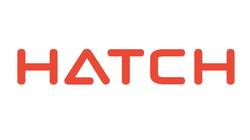World-class shaft and headgear engineering expertise
| Press release_World-class shaft and headgear engineering expertise | 32.5 KB | Download | |
| Kevin Seyfried, director mining AEM, associate at Hatch. | 1.46 MB | Download | |
| Hatch has designed and built some of the world’s biggest and most complex shafts and headgears | 1.9 MB | Download | |
| Mufulira Shaft and Mindola Shaft for Mopani Copper Mines in Zambia | 4.41 MB | Download | |
| The Impumelelo main shaft headgear with Koepe winder house. | 932.14 KB | Download |
Hatch has designed and built some of the world’s biggest and most complex shafts and headgears, with excellent results. Current projects include the Mufulira Shaft and Mindola Shaft for Mopani Copper Mines in Zambia, where Hatch recently completed work on the Synclinorium Shaft. Other flagship projects include the Mosaic K3 Shaft, the Impumelelo Shaft System and Nickel Rim South.
“Our headgear and shaft design teams service clients globally. Through this, we have a large base of global exposure to all types of design challenges. We are often used by clients to review shaft and infrastructure designs from the collar to the face,” says Kevin Seyfried, director mining AEM, associate at Hatch.
Shaft designs are mostly unique, with their own unique challenges, but Hatch also has the capability to provide standardised designs for clients. “Many of our team members come from a background where they designed and built the bulk of South Africa’s shafts and headgears for the large mining houses in the 1980s and 1990s, which gave them extensive exposure to a vast expanse of history of designs,” Seyfried notes.
A unique aspect of Hatch’s offering in shaft and headgear design is its Dynamic Simulation capabilities. Benefits of this approach include ore and waste handling system de-bottlenecking and shaft services simulations. This allows for the optimal design and planning of shaft systems. It also allows mining clients optimise their systems with the least amount of capital and operating expenditure.
“We are seeing many technologies being investigated and designed by OEMs and shaft sinking companies, and we are excited about what the future may bring,” Seyfried notes. These include blind boring, reverse circulation drilling and shaft boring machines.
Many of the so-called ‘new’ technologies in mining have been used in the civil and tunneling industries with great success. However, the mining industry still needs some convincing that their mines will be developed rapidly enough to discontinue or minimise the use of tried-and-trusted drilling and blasting methods, Seyfried cautions.
“The challenge is to match the new technologies to the challenging design parameters that our clients find themselves in. The industry will have to see a step change in advance rates which could, in turn, shorten the time from inception of concept to the construction of the mine.
“It is all about the business case and the net present value when it comes to timing. Often times our clients simply do not have the time in their schedules to handle the traditional shaft sinking rates and associated schedules,” Seyfried highlights.
This has resulted in a trend towards the refurbishment and optimisation of existing headgears and shaft complexes. “Especially in the current economic climate, our clients are looking at all areas of their operation to become leaner and more cost-effective. We have successfully changed and modified headgears and tipping arrangements which, in turn, resulted in massive upside on the hoisting capacities, with relatively small capital cost impact.”
Hatch has reviewed a number of operations globally where refurbishments were needed to promote both safety mine and longevity of the asset. “Shafts are expensive, and where business cases allow for shafts as the optimal solution for mine access, one needs to protect the asset and keep it well maintained. We have managed to design headgears in an almost modular fashion that allowed us to change over from an old headgear to a new headgear with no impact on the operations,” Seyfried reveals.
Ends
Notes to the editor
To download hi-res images for this release, please visit http://media.ngage.co.za and click the Hatch link to view the company’s press office.
About Hatch
Whatever our clients envision, our engineers can design and build. With over six decades of business and technical experience in the mining, energy, and infrastructure sectors, we know your business and understand that your challenges are changing rapidly. We respond quickly with solutions that are smarter, more efficient and innovative. We draw upon our 9,000 staff with experience in over 150 countries to challenge the status quo and create positive change for our clients, our employees, and the communities we serve.
Media Contact
Gerhard Hope
NGAGE Public Relations
Phone: (011) 867-7763
Fax: 086 512 3352
Cell: 078 824 8723
Email: gerhard [at] ngage [dot] co [dot] za
Web: www.ngage.co.za
Browse the NGAGE Media Zone for more client press releases and photographs at http://media.ngage.co.za

